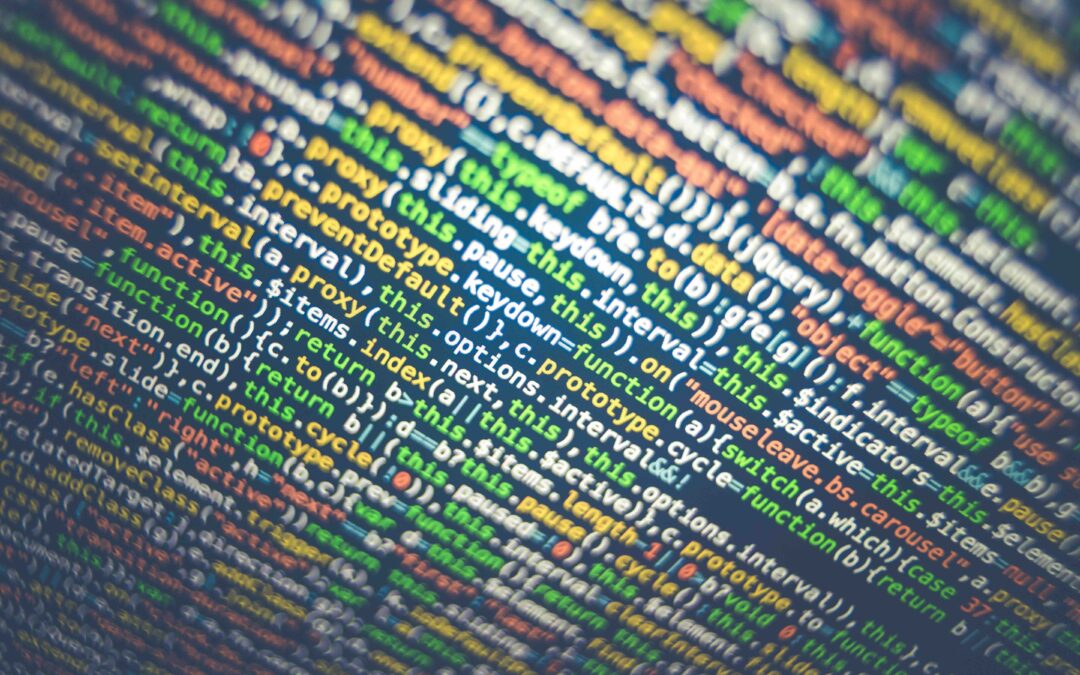
Acknowledgments
Read Full Article (PDF)
Jami-Reese D. Robertson*
* Editor-in-Chief, University of Richmond Law Review; J.D. 2025, University of Richmond School of Law.

Jami-Reese D. Robertson*
* Editor-in-Chief, University of Richmond Law Review; J.D. 2025, University of Richmond School of Law.

Law firms are unique creatures. They are subject to market pressures as well as ethical obligations and professional norms. They are in direct competition with other organizations for both clients and the lawyers necessary to perform work for those clients. They are comprised of lawyers who are simultaneously cooperative and competitive with one another. They are neither hierarchy nor anarchy, neither a collection of independent actors nor an entity under which its employees are subsumed. Instead, they are organizations shaped and reshaped by their members; organized around shared goals, internal contestations and external constraints; and defined by the ties between and among the firm, its attorneys, and its clients. As such, law firms can best be conceptually understood as a network of lawyers.
This article looks to move past the merely conceptual and examine an actual law firm’s internal working network Using the press releases of a large corporate law firm—documents that identify the lawyers who have worked together on particular matters—to build a dataset of working ties in the firm, this article presents an empirical model of the law firm as a network of lawyers. I then use statistical analysis to determine what factors influenced the creation of this network, explore how this network and the lawyers in it were affected by an external shock in the form of the 2008–09 financial crisis, and look to understand how structural positions in this network affect the power within the firm of the constituent lawyers. In doing so, I confront questions about power within professional organizations, stratification within the legal profession, and how professional norms interact with organizational goals to influence behavior within the law firm.
Alan James Kluegel *
* Assistant Professor, University of Kentucky J. David Rosenberg College of Law. The author would like to thank Heather Haveman, KT Albiston, Calvin Morrill, Bob Lawless, Arik Lifschitz, commenters at the American Sociological Association and Law & Society Association conferences — and Laurie Edelman, one last time. Kelly Vance and the editorial team at the University of Richmond Law Review have improved this Article immensely. All errors will eventually be correct on a long enough timeline.

Public nuisance plaintiffs can seek limited remedies. Generally, plaintiffs can sue to abate a public nuisance, with the available monetary relief limited to the funds necessary to do so. Because public nuisance law limits plaintiffs’ monetary award to forward-looking abatement relief, there can be a large disparity between the profit a defendant earns by creating a public nuisance, or its total social cost, and the costs the defendant incurs when liable.
This Article argues that the financial consequences defendants face in public nuisance litigation are too small to effectively deter potential tortfeasors from creating public nuisances. Liability will deter potential tortfeasors from engaging in tortious conduct if the expected penalties exceed the tortfeasor’s benefit from engaging in that conduct. An optimal remedial regime would therefore levy financial penalties that incentivize the defendant to take more care, or limit its activity, by making it unprofitable to unreasonably interfere with public rights. But under current law, a firm can profitably create a public nuisance whenever the profits the firm generates prior to legal intervention exceed abatement costs, which is generally true. And so, the incentives that public nuisance law establishes are insufficient to deter defendants from creating a public
nuisance.
Efficient deterrence of public nuisance requires a more forceful remedy than the law currently provides. This Article argues that courts should disgorge tortfeasors of the profits gained from a public nuisance.
Clayton J. Masterman *
* Associate Professor of Law, University at Buffalo School of Law; email: cjmaster@buffalo.edu.

Since the early 2000s, U.S. courts have begun hearing “data breach” liability cases, the inevitable result of a growing internetconnected technology infrastructure. The relatively recent development of case law signals a body of law in development, stunted by significant limiting factors that prevent the coalescence of legal principles. To date, no holistic empirical exploration of data breach cases has offered sufficient detail to explore these factors.
This descriptive empirical study analyzes, in detail, 225 data breach cases from 2005–2022, reviewing these cases over an extended period to descriptively identify key trends and changes within a bona fide data breach case’s life on the docket.
This study tests common perceptions of data breach litigation, including Article III standing challenges that have presented a
nearly insurmountable obstacle to data breach litigation. This study also identifies the type of plaintiff, settlement amounts, type and disposition of information compromised, claims, common motions, and key strategies most likely to result in a favorable plaintiff outcome, including key impediments. These results will provide crucial information for litigating parties, their counsel, judges, and policymakers.
Charlotte Tschider *
* Charlotte Tschider is an Associate Professor of Law at the Loyola University Chicago School of Law. I would like to thank David Schwartz, Josephine Wolff, Mark Lemley, Christopher Yoo, Mark McKenna, Bryan Choi, Brett Frischmann, Matthew Sag, Justin (Gus) Hurwitz, David Thaw, Steven Bellovin, and participants in the 2024 Junior Faculty Forum for Law and STEM for comments on various stages of this Article. A special thanks to Jay Edelson and Aaron Charfoos for their perspectives on data breach litigation and for offering their expertise with my classes on this topic. I would especially like to thank Annalisa Kolb for her exceptional research skills generating and validating cases in this study. For access to the full data set, please contact me at ctschider@luc.edu with the subject “Data Breach Study.”

In Congressional Insiders and Outsiders, Amy Coney Barrett distinguished between “congressional insider” approaches like process-based theories (i.e., drawing interpretive resources from Congress’s procedures and practices) and “congressional outsider” approaches like textualism (i.e., drawing interpretive resources exclusively from ordinary meaning of the statutory text). According to Barrett, textualists would find an “outsider” approach normatively superior because courts should be faithful agents of the people, who do not usually have inside knowledge of Congress. This embodies a distinctive type of defense for textualism, which I call “outsider textualism,” based not on statutory text as the compromise
drawn in Congress, but instead on a concern for persons subject to the law.
I argue that this textualist argument nevertheless fails because it made two logical leaps: One, by assuming an “outsider” approach always equals faithful agency to the people; Two, by assuming that an “outsider” approach—if it does equal faithful agency to the people—could justify textualism. More specifically, the outsider perspective does not generally follow from “faithful agency” to the people because, for example, the people could legitimately expect administrative agencies to comply with a legislative command that is not accessible to an outsider; and even if the outsider perspective is justified in contexts such as criminal law, it does not follow that textualist understanding is fairly expected of an outsider criminal defendant. In other words, outsider textualism illicitly relies on the appeal of “fair notice” canons as a springboard for textualism in
general. Instead of blanket justifying textualism, what faithful agency to the people requires might inevitably be a substantive, value-laden question dependent on our conceptions of justice.
Chun Hin Jeffrey Tsoi *
* Ph.D. Candidate, Department of Philosophy, Georgetown University; Senior Fellow at a nonprofit organization. J.D., Georgetown University Law Center. Opinions are exclusively my own and are not representative of any other person or entity. I am very grateful to Heidi Feldman and Kevin Tobia for their insightful comments on the first draft, and to Josh
Chafetz, Anita Krishnakumar, Robin West, Carlos Vázquez, Melissa Stewart, Rafi Reznik, Jack Whitley, Jeet Shroff, Morial Shah, Mansi Gaur, and other participants of the Georgetown Law S.J.D./Fellows Collaborative Seminar and Workshop for their astute questions and suggestions. Thanks also to the diligent editors of the University of Richmond Law Review for their careful and thoughtful edits. All remaining errors are mine.

Trademarks serve to indicate an item’s source of origin and distinguish it from other commodities in the market. When there are two or more entities with similar trademarks, who offer related goods or services, the entity to use the mark first has seniority over the other users. Furthermore, the senior user has priority, making him or her “entitled to enjoin other ‘junior’ users from using the mark, or one that is deceptively similar to it” in a way that is likely to confuse consumers. But under certain circumstances a trademark owner can claim priority over a mark by relying instead on “the first-use date of a similar, but technically distinct mark.” This is achieved through a concept known as tacking, which allows a trademark holder to modify or expand their existing mark by “tacking” the first use date of an earlier mark onto a revised mark.
This Comment examines the heightened stringency of the rarely applied tacking doctrine, exemplified by the United States Court of Appeals for the Federal Circuit’s (“Federal Circuit”) decision in Bertini v. Apple. The Bertini court addressed the proper approach when dealing with tacking in the context of differing goods or services, with the decision creating an additional obstacle for trademark holders seeking to successfully tack under these circumstances. Because of this decision, there is a potential for consumer confusion and an increase in trademark application filings, further contributing to the existing backlog at the United States Patent and Trademark Office (“USPTO”).
Catherine S. Condyles *
* J.D., 2025, University of Richmond School of Law; B.A., 2019, Randolph-Macon College. I want to extend my sincerest thanks to Professor Christopher Cotropia for his insightful suggestions and guidance throughout the writing process. I would also like to thank my University of Richmond Law Review colleagues, especially Hannah Nemanic, the lead editor on this Comment, and her editing team for all their hard work and dedication in preparing this Comment for publication. It has been a privilege working with all of you.